
Surrealism was an avant-garde art movement in Paris from 1924 to 1941, consisting of a small group of writers, artists, and filmmakers, including André Breton (1896–1966), Salvador Dali (1904–1989), and Luis Buñuel (1900–1983). The movement used shocking, irrational, or absurd imagery and Freudian dream symbolism to challenge the traditional function of art to represent reality. Related to Dada cinema, Surrealist cinema is characterised by juxtapositions, the rejection of dramatic psychology, and a frequent use of shocking imagery.
Critics have debated whether 'Surrealist film' constitutes a distinct genre. Recognition of a cinematographic genre involves the ability to cite many works which share thematic, formal, and stylistic traits. To refer to Surrealism as a genre is to imply that there is repetition of elements and a recognizable, generic formula which describes their makeup. Several critics have argued that, due to Surrealism's use of the irrational and on non-sequitur, it is impossible for Surrealist films to constitute a genre or a style. In his 2006 book Surrealism and Cinema, Michael Richardson argues that surrealist works cannot be defined by style or form, but rather as results of the practice of surrealism. Richardson writes: "Within popular conceptions, surrealism is misunderstood in many different ways, some of which contradict others, but all of these misunderstandings are founded in the fact that they seek to reduce surrealism to a style or a thing in itself rather than being prepared to see it as an activity with broadening horizons. Many critics fail to recognise the distinctive qualities that make up the surrealist attitude. They seek something – a theme, a particular type of imagery, certain concepts – they can identify as 'surrealist' in order to provide a criterion of judgement by which a film or art work can be appraised. The problem is that this goes against the very essence of surrealism, which refuses to be here but is always elsewhere. It is not a thing but a relation between things and therefore needs to be treated as a whole.
Surrealists are not concerned with conjuring up some magic world that can be defined as 'surreal'. Their interest is almost exclusively in exploring the conjunctions, the points of contact, between different realms of existence. Surrealism is always about departures rather than arrivals." [3]
While there are numerous films which are true expressions of the movement, many other films which have been classified as Surrealist simply contain Surrealist fragments. Rather than 'Surrealist film' the more accurate term for such works may be 'Surrealism in film'.
Dada Roots

"Dada was a movement that attracted artists in all media. It began around 1915, as a result of artists' sense of the vast, meaningless loss of life in World War I. Artists in New York, Zurich, France, and Germany proposed to sweep aside traditional values and to elevate an absurdist view of the world. They would base artistic creativity on randomness and imagination. Max Ernst displayed an artwork and provided a hatchet so that spectators could demolish it. Marcel Duchamp invented "ready-made" artwork, in which a found object is placed in a museum and labeled; in 1917, he created a scandal by signing a urinal "R. Mutt" and trying to enter it in a prestigious show. Dadaists were fascinated by collage, the technique of assembling disparate elements in bizarre juxtapositions. Ernst, for example, made collages by pasting together scraps of illustrations from advertisements and technical manuals.
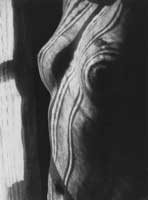
Under the leadership of poet Tristan Tzara, Dadaist publications, exhibitions, and performances flourished during the late 1910s and early 1920s. The performance soiréeincluded such events as poetry readings in which several passages were performed simultaneously. On July 7, 1923, the last major Dada event, the Soirée du 'Coeur à Barbe'(Soirée of the ' Bearded Heart' ), included three short films: a study of New York by American artists Charles Sheeler and Paul Strand, one of Hans Richter's Rhythmus abstract animated works, and the American artist Man Ray's first film, the ironically titled Le retour à la raison (Return to Reason). The element of chance certainly entered into the creation of Retour à la raison, since Tzara gave Ray only twentyfour hours' notice that he was to make a film for the program. Ray combined some hastily shot live footage with stretches of "Rayograms". The soirée proved a mixed success, since Tzara's rivals, led by poet Andre Breton, provoked a riot in the audience. This riot was symptomatic of the disagreements that were already bringing Dada to an end." [2]
Breton had begun investigating Sigmund Freud's research into the unconscious and wanted to bring his theories into the creative process of dada. Tzara saw psychoanalysis as an instrument of mystification and bourgeois ideals, which he felt to be counter to the dada anti-real; Breton felt that Tzara's lack of seriousness was the cause for dada's approaching self-destruction, and he wanted to reorganize and reinvigorate the movement. He incorporated his interest in Freud with the automatic processes of dada art, resulting in the new movement of surrealism.
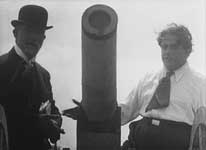
Even though by 1922, dada was dead, key Dada films were still to come. "In late 1924, Dada artist Francis Picabia staged his ballet Relâche (meaning "performance called off"). Signs in the auditorium bore such statements as "If you are not satisfied, go to hell." During the intermission (or entr'acte), René Clair's Entr'acte was shown, with music by composer Erik Satie, who had done the music for the entire show. The evening began with a brief film prologue (seen as the opening segment of modern prints of Entr'acte) in which Satie and Picabia leap in slow motion into a scene and fire a cannon directly at the audience. The rest of the film, appearing during the intermission, consisted of unconnected, wildly irrational scenes. Picabia summed up the Dada view when he characterized Clair's film: "Entr'acte does not believe in very much, in the pleasure of life, perhaps; it believes in the pleasure of inventing, it respects nothing except the desire to burst out laughing."

Dada artist Marcel Duchamp made one foray into cinema during this era. By 1913, Duchamp had moved away from abstract painting to experiment with such forms as ready- mades and kinetic sculptures. The latter included a series of motor-driven spinning discs. With the help of Man Ray, Duchamp filmed some of these discs to create Anémic cinéma in 1926. This brief film undercuts traditional notions of cinema as a visual, narrative art. All its shots show either turning abstract disks or disks with sentences containing elaborate French puns. By emphasizing simple shapes and writing, Duchamp created an "anemic" style. (Anemic is also an anagram for cinema.) In keeping with his playful attitude, he signed the film "Rrose Selavy", a pun on Eros c'est la vie (Eros is life).
Entr'acte and other dada films were on the 1925 Berlin program, and they convinced German filmmakers like Walter Ruttman and Hans Richter that modernist style could be created in films without completely abstract, painted images. Richter, who had been linked with virtually every major modern art movement, dabbled in Dada. In his Vormittagsspuk (Ghosts before Breakfast, 1928), special effects show objects rebelling against their normal uses. In reverse motion, cups shatter and reassemble. Bowler hats take on a life of their own and fly through the air, and the ordinary laws of nature seem to be suspended." [2]
The Surrealists
Riven by internal dissension, the European Dada movement was largely over by 1922. Many of its members formed another group, the Surrealists. While many dadaists considered Breton to be a traitor to dada, others made the transition directly into surrealism. After a brief period of what was termed "le mouvement flou,"(the fuzzy movement) in which the surrealists defined the movement by reference to the discarded dada, Breton (known as the Pope of Surrealism) published the first Manifesto of Surrealism in 1924. It was surrealism's declaration of the rights of man through the liberation of the unconscious. The goal of surrealism was to synthesize dream and reality so that the resulting art challenged the limits of representation and perception. Surrealism abandoned the dada goal of art as a direct transmitter of thought and focused instead on expressing the rupture and duality of language through imagery.
The surrealist image could be either verbal or pictorial and had a twofold function. First, images that seem incompatible with each other should be juxtaposed together in order to create startling analogies that disrupt passive audience enjoyment and conventional expectations of art. This technique was perhaps an influence of Soviet montage theory, with which the surrealists were familiar. Second, the image must mark the beginning of an exploration into the unknown rather than merely representing a thing of beauty. The surrealist experience of beauty instead involved a psychic disturbance, a "convulsive beauty" generated by the startling images and the analogies they create in the mind of the viewer.
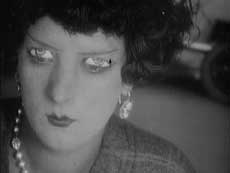
"Surrealism resembled Dada in many ways, particularly in its disdain for orthodox aesthetic traditions. Like Dada, Surrealism sought out startling juxtapositions. Andre Breton, who led the break with the Dada ists and the creation of Surrealism, cited an image from a work by the Comte de Lautreamont: "Beautiful as the unexpected meeting, on a dissection table, of a sewing machine and an umbrella." The movement was heavily influenced by the emerging theories of psychoanalysis. Rather than depending on pure chance for the creation of artworks, Surrealists sought to tap the unconscious mind. In particular, they wanted to render the incoherent narratives of dreams directly in language or images, without the interference of conscious thought processes.
The ideal Surrealist film differed from Dada works in that it would not be a humorous, chaotic assemblage of events. Instead, it would trace a disturbing, often sexually charged story that followed the inexplicable logic of a dream. With a patron's backing, Dadaist Man Ray moved into Surrealism with Emak Bakia (1927), which used many film tricks to suggest a woman's mental state. At the end she is seen in a famous image, her eyes closed, with eye balls painted on them; she opens her eyes and smiles at the camera. Many Surrealists denounced the film as containing too little narrative. Ray's next film, L'étoile de mer (The Starfish, 1928), hinted at a story based on a script by Surrealist poet Robert Desnos. It shows a couple in love, interspersed with random shots of starfish, trains, and other objects. At the end the woman leaves with another man, and her cast-off lover consoles himself with a beautiful starfish.

Germaine Dulac, who had already worked extensively in regular feature filmmaking and French Impressionism, turned briefly to Surrealism, directing a screenplay by poet Antonin Artaud. The result was La coquille et le clergyman (The Seashell and the Clergyman, 1928), which combines Impressionist techniques of cinematography with the disjointed narrative logic of Surrealism. A clergyman carrying a large seashell smashes laboratory beakers; an officer intrudes and breaks the shell, to the clergyman's horror. The rest of the film consists of the priest's pursuing a beautiful woman through an incongruous series of settings. His love seems to be perpetually thwarted by the intervention of the officer. Even after the priest marries the woman, he is left alone drinking from the shell. The initial screening of the film provoked a riot at the small Studio des Ursulines theater, though it is still not clear whether the instigators were Artaud's enemies or his friends, protesting Dulac's softening of the Surrealist tone of the scenario. With The Seashell and the Clergyman, Dulac overhauls narrativity entirely and presents us with pure feminine desire, intercut against masculine desires of a priest. Above all, Dulac is responsible for "writing" a new cinematic language that expressed transgressive female desires in a poetic manner.
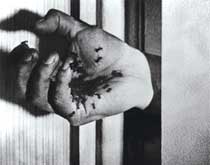
Perhaps the quintessential Surrealist film was created in 1928 by novice director Luis Buñuel. A Spanish film enthusiast and modernist poet, Buñuel had come to France and been hired as an assistant by Jean Epstein. Working in collaboration with Salvador Dali, he made Un chien andalou (An Andalusian Dog). Its basic story concerned a quarrel between two lovers, but the time scheme and logic are impossible. Throughout, intertitles announce meaningless intervals of time passing, as when "sixteen years earlier" appears within an action that continues without pause." [2] "A series of shocking sequences were designed to challenge any audience: a hand opens to reveal a wound from which a group of ants emerge; a young man drags two grand pianos across a room, laden with a pair of dead donkeys and two nonplussed priests, in a vain attempt to win the affection of a woman he openly lusts after. These are just two of the more outrageous sequences in the film; perhaps the most famous scene occurs near the beginning, when Buñuel himself is seen stropping a razor on a balcony and then ritualistically slitting the eyeball of a young woman who sits passively in a chair a moment later.

Buñuel and Dali would collaborate on one more film together, the very early sound picture L'âge d'or (The Age of Gold, 1930), but the two artists fell out on the first day of shooting, with Buñuel chasing Dali from the set with a hammer. L’Âge d’or was savagely anticlerical, and the initial screening caused such a riot that the film was banned for many years before finally appearing in a restored version on DVD. L'âge d'or loosely follows two lovers whose passion defies society’s conventions; the film begins with a documentary on the mating habits of scorpions and ends with an off-screen orgy in a monastery. Bunuel, when asked to describe L'âge d'or, said that it was nothing less than "a desperate and passionate call to murder."
Jean Cocteau, a multitalented artist whose boldly Surrealist work in the theater, as well as his writings and drawings, defined the yearnings and aspirations of a generation. His groundbreaking sound feature film, Le sang d'un poète (The Blood of a Poet, 1930), was not shown publicly until 1932 because of controversy surrounding the production of Dali and Buñuel’s L'âge d'or, both films having been produced by the Vicomte de Noailles, a wealthy patron of the arts.

Dispensing almost entirely with plot, logic, and conventional narrative, The Blood of a Poet relates the adventures of a young poet who is forced to enter the mirror in his room to walk through a mysterious hotel, where his dreams and fantasies are played out before his eyes. Escaping from the mirror by committing ritualistic suicide, he is then forced to watch the spectacle of a young boy being killed with a snowball with a rock center during a schoolyard fight and then to play cards with Death, personified by a woman dressed in funeral black. When the poet tries to cheat, he is exposed, and again kills himself with a small handgun. Death leaves the card room triumphantly, and the film concludes with a note of morbid victory.
Photographed by the great Georges Périnal, with music by Georges Auric, The Blood of a Poet represented a dramatic shift in the production of the sound film. Though influenced by the work of Dali and Buñuel and the Surrealist films of Man Ray and René Clair, the picture represents nothing so much as an opium dream (Cocteau famously employed the drug as an aid to his creative process). Throughout, Cocteau uses a great deal of trick photography, including negative film spliced directly into the final cut to create an ethereal effect, mattes (photographic inserts) to place a human mouth in the palm of the poet’s hand, and reverse motion, slow motion, and cutting in the camera to make people and objects disappear. For someone who had never before made a film, Cocteau had a remarkably intuitive knowledge of the plastic qualities of the medium, which he would exploit throughout his long career." [4]
"Self-taught American artist Joseph Cornell had begun painting in the early 1930s, but he quickly became known chiefly for his evocative assemblages of found obj ects inside glass-sided display boxes. Mixing antique toys, maps, movie-magazine clippings, and other emphemeral items mostly scavenged from New York secondhand shops, these assemblages created an air of mystery and nostalgia. Although Cornell led an isolated life in Queens, he was fascinated by ballet, music, and cinema. He loved all types of films, from Carl Dreyer's The Passion of Joan of Arc to B movies, and he amassed a collection of 16mm prints.
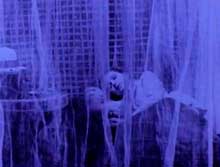
In 1936, he completed Rose Hobart, a compilation film that combines clips from scientific documentaries with reedited footage from an exotic Universal thriller, East of Borneo (1931). The fiction footage centers around East of Borneo's lead actress, Rose Hobart. Cornell avoided giving more than a hint as to what the original plot, with its cheap jungle settings and sinister turbaned villain, might have involved. Instead, he concentrated on repetitions of gestures by the actress, edited together from different scenes; on abrupt mismatches; and especially on Hobart's reactions to items cut in from other films, which she seems to "see" through false eyeline matches. In one pair of shots, for example, she stares fascinatedly at a slow-motion view of a falling drop creating ripples in a pool. Cornell specified that his film be shown at silent speed (sixteen frames per second instead of the usual twenty-four) and through a purple filter; it was to be accompanied by Brazilian popular music. (Modern prints are tinted purple and have the proper music.)" [2]
Rose Hobart seems to have had a single screening in 1936, in a New York gallery program of old films treated as "Goofy Newsreels". Its poor reception dissuaded Cornell from showing it again for more than twenty years.
Surrealist Cinema's Style
"Whereas the French Impressionist filmmakers worked within the commercial film industry, the Surrealist filmmakers relied on private patronage and screened their work in small artists' gatherings. Such isolation is hardly surprising, since Surrealist cinema was a more radical movement, producing films that perplexed and shocked most audiences.
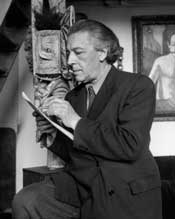
Surrealist cinema was directly linked to Surrealism in literature and painting. According to its spokesperson, Andre Breton, "Surrealism [was] based on the belief in the superior reality of certain forms of association, heretofore neglected, in the omnipotence of dreams, in the undirected play of thought." Influenced by Freudian psychology, Surrealist art sought to register the hidden currents of the unconscious, "in the absence of any control exercised by reason, and beyond any aesthetic and moral preoccupation."
Automatic writing and painting, the search for bizarre or evocative imagery, the deliberate avoidance of rationally explicable form or style - these became features of Surrealism as it developed in the period 1924-1929. From the start, the Surrealists were attracted to the cinema, especially admiring films that presented untamed desire or the fantastic and marvelous (for example, slapstick comedies, Nosferatu, and serials about mysterious supercriminals). Surrealist cinema is overtly anti-narrative, attacking causality itself. If rationality is to be fought, causal connections among events must be dissolved, as in The Seashell and the Clergyman.
Many Surrealist films tease us to find a narrative logic that is simply absent. Causality is as evasive as in a dream. Instead, we find events juxtaposed for their disturbing effect. The hero gratuitously shoots a child (L’Âge d’or), a woman closes her eyes only to reveal eyes painted on her eyelids (Ray's Emak Bakia, 1927), and - most famous of all - a man strops a razor and deliberately slits the eyeball of an unprotesting woman (Un chien andalou). An Impressionist film would motivate such events as a character's dreams or hallucinations, but in these films, character psychology is all but nonexistent. Sexual desire and ecstasy, violence, blasphemy, and bizarre humor furnish events that Surrealist film form employs with a disregard for conventional narrative principles. The hope was that the free form of the film would arouse the deepest impulses of the viewer.
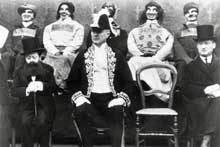
The style of Surrealist cinema is eclectic. Mise-en-scene is often influenced by Surrealist painting. The ants in Un chien andalou come from Dali's pictures; the pillars and city squares of The Seashell and the Clergyman hark back to the Italian painter Giorgio de Chirico. Surrealist editing is an amalgam of some Impressionist devices (many dissolves and superimpositions) and some devices of the dominant cinema. The shocking eyeball slitting at the start of Un chien andalou relies on some principles of continuity editing (and indeed on the Kuleshov effect). However, discontinuous editing is also commonly used to fracture any organized temporalspatial coherence. In Un Chien andalou, the heroine locks the man out of a room only to turn to find him inexplicably behind her. On the whole, Surrealist film style refused to canonize any particular devices, since that would order and rationalize what had to be an "undirected play of thought."

The fortunes of Surrealist cinema shifted with changes in the art movement as a whole. By late 1929, when Breton joined the Communist Party, Surrealists were embroiled in internal dissension about whether communism was a political equivalent of Surrealism. Buñuel left France for a brief stay in Hollywood and then returned to Spain. The chief patron of Surrealist filmmaking, the Vicomte de Noailles, supported Jean Vigo's Zéro de conduite (1933), a film of Surrealist ambitions, but then stopped sponsoring the avant-garde. Thus, as a unified movement, French Surrealism was no longer viable after 1930. Individual Surrealists continued to work, however. The most famous was Buñuel, who continued to work in his own brand of the Surrealist style for 50 years. His later films, such as Belle de jour (1967) and Le charme discret de la bourgeoisie (1972), continue the Surrealist tradition." [1]In 1947 Hans Richter released Dreams That Money Can Buy, seven short episodes that examine the unconscious, written by and featuring Richter, Man Ray, Marcel Duchamp, Fernand Léger, Max Ernst (1891–1976), and Alexander Calder (1898–1976). Besides Bunuel's work, this is the last official surrealist film.
Resources
- [1] David Bordwell & Kristin Thompson, Film Art: An Introduction (McGraw Hill, 2008) pp 452-53
- [2] Kristin Thompson & David Bordwell, Film History: An Introduction (McGraw-Hill, 2003) pp 177-79, 318-19
- [3] Michael Richardson, Surrealism and Cinema (Berg, 2006) pp 3
- [4] Wheeler Winston Dixon & Gwendolyn Foster, A Short History of Film (Rutgers University Press, 2008) pp 62, 142-43
No comments:
Post a Comment